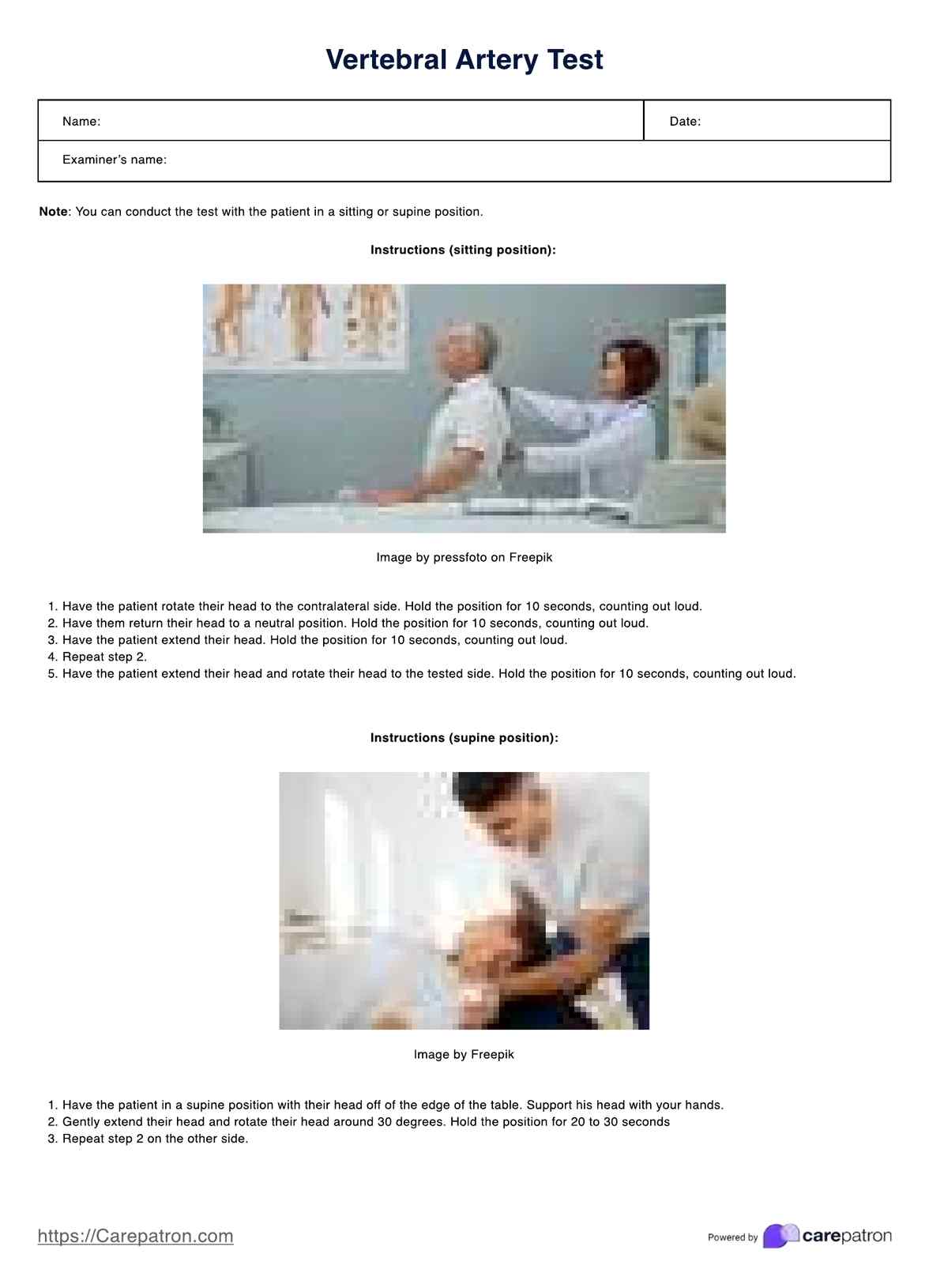You can use the VAT Test by downloading the template and following the instructions provided in the document.
For a more comprehensive step-by-step guide, please refer “How does this VAT test work” section above.

Conduct the Vertebral Artery Test (VAT) alongside other tests to check if they are at risk for vertebrobasilar insufficiency (VBI).
You can use the VAT Test by downloading the template and following the instructions provided in the document.
For a more comprehensive step-by-step guide, please refer “How does this VAT test work” section above.
The benefits of the VAT test are that it’s easy to understand, quick to administer, and can be the test that’ll prompt you and fellow practitioners to do further testing to alleviate a patient’s pain.
The VAT test assesses a patient’s vertebral artery blood flow and is one of the tests a practitioner can use to determine if a patient has vertebrobasilar insufficiency or VBI.
EHR and practice management software
*No credit card required
Free
$0/usd
Unlimited clients
Telehealth
1GB of storage
Client portal text
Automated billing and online payments